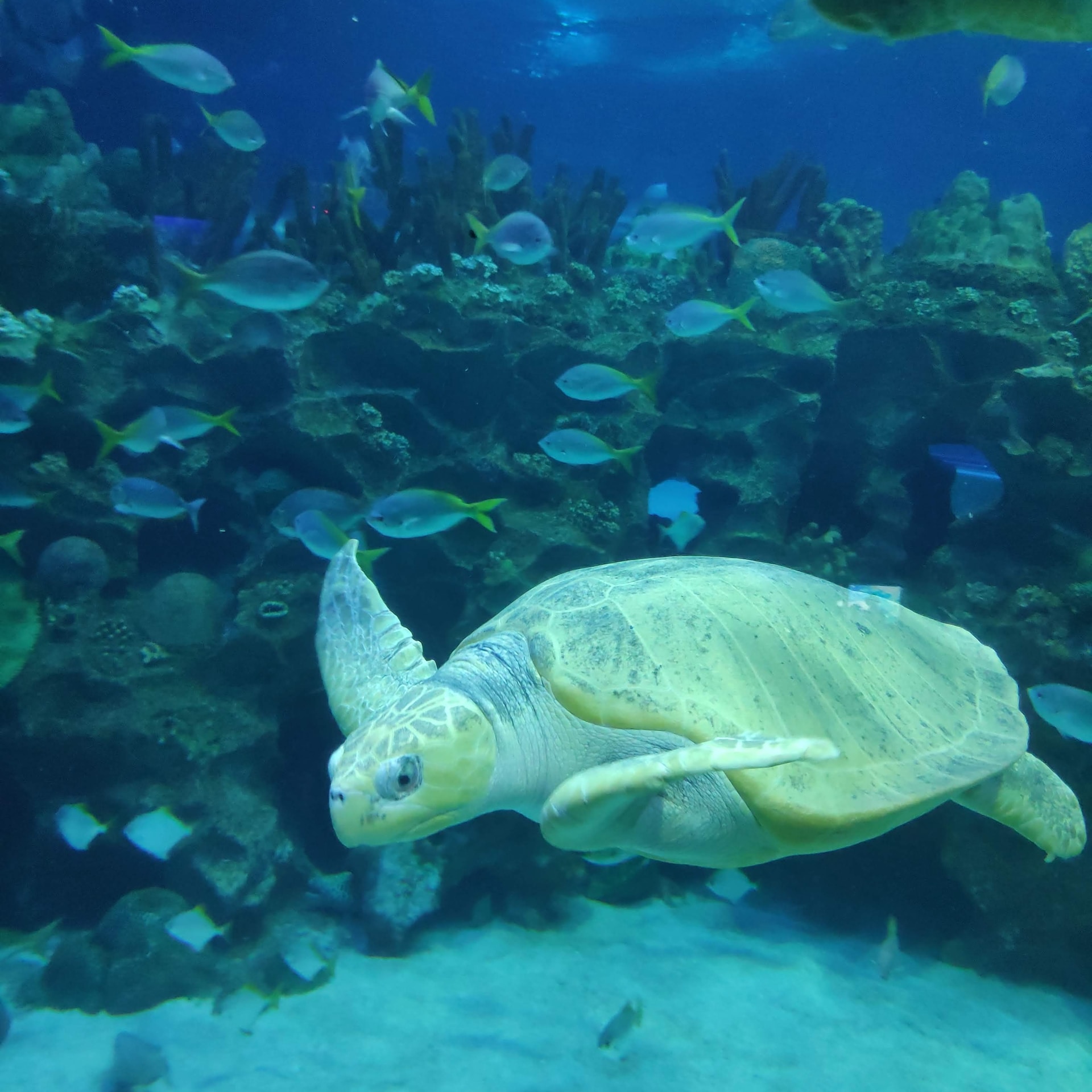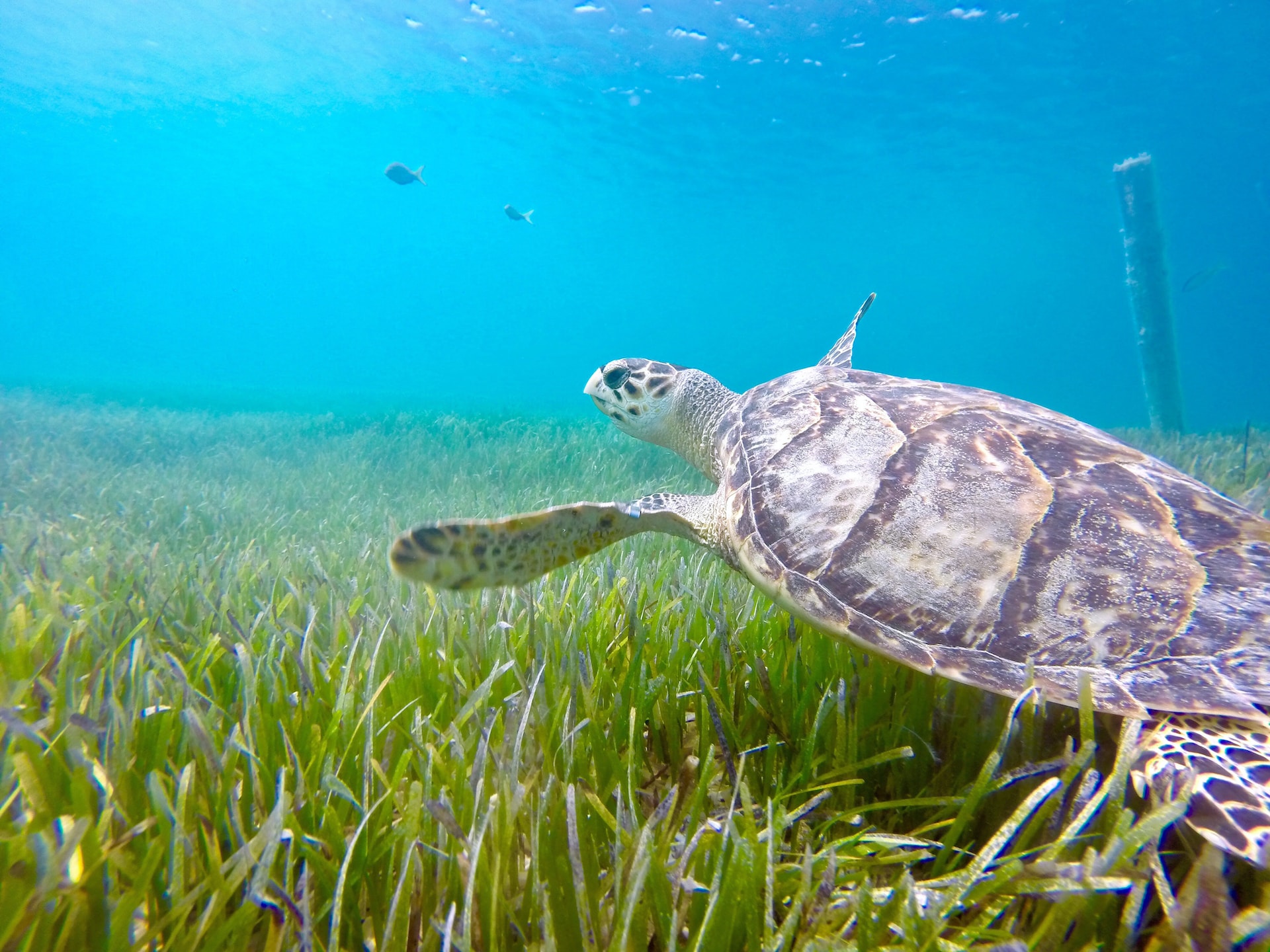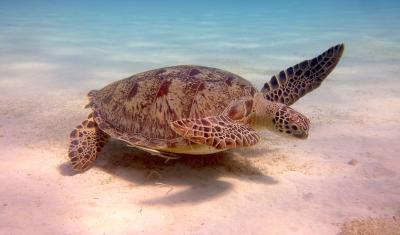Savez-vous que même à des niveaux de population réduits, les tortues marines jouent un rôle incomparablement important dans le maintien de la santé de nos écosystèmes océaniques. Ils le font aussi depuis plus de 100 millions d'années. Cependant, de nombreuses menaces humaines telles que la surpêche commerciale, la pollution, les dommages causés à leurs habitats de nidification et l'impact global du changement climatique éliminent rapidement les tortues marines de nos océans, les poussant même à l'extinction.
L'objectif principal de cet article est d'expliquer comment 6 espèces de tortues particulières :
- Tortues vertes
- Tortues imbriquées
- Tortues de mer Ridley de Kemp
- Tortues Luth
- Tortues caouannes
jouent des rôles très importants dans le maintien des réseaux trophiques marins critiques, facilitent le cycle des nutriments entre l'eau et la terre, et surtout, comment ils sont vitaux pour la survie des herbiers marins et des récifs coralliens sains qui sont un habitat clé pour d'autres espèces marines. Cet article souligne comment ces espèces sont menacées, pourquoi elles ont besoin d'efforts bénévoles et où se trouvent leurs populations.
1. Les tortues vertes ont un impact sur les herbiers marins
(Statut : en voie de disparition/menacé)
Le problème avec les herbiers est que s'ils ne sont pas constamment broutés, ils ont rapidement tendance à proliférer. Ces herbiers envahis par la végétation commencent alors à obstruer les courants marins et à ombrager les fonds marins. Ils commencent à se décomposer et à abriter la croissance de moisissures visqueuses, de divers micro-organismes, d'invertébrés, de champignons et d'algues.

This is where the green sea turtles play an important role as they are a large herbivore species that graze on the seagrass beds & maintain their health. By eating just a few centimetres from the bottom of the blades, this foraging action prevents the accumulation of old seagrass on the seabed and allows it to be removed or float away.
When green sea turtles continue cropping on the same seagrass plot as such, seagrass roots receive less amount of nitrogen and grow in a limited & optimum way. This positively impacts the overall nutrient cycling, surrounding plant & animal species, and predator-prey relations. Thus, if the green sea turtle populations remain healthy then the productivity of the marine food webs & fish populations will stand a better chance of thriving, which will mean more protein-rich food available for people.
Most Ideal Places to Volunteer for Green Sea Turtles
Location: Costa Rica, Great Barrier Reef, Australia, Ghana
There was a time when green turtles were abundantly found throughout the world with their nesting activities traced in about 80 countries and their presence in more than 140. However, due to heavy exploitation for their fat, meat and eggs, their populations suffered a dramatic decline.
Currently, the largest nesting populations of green turtles are found in several coasts of Costa Rica and the Great Barrier Reef in Australia. Volunteering action in these places can have a bigger impact on their world populations.
2. Hawksbill Sea Turtles Keep Coral Reefs Healthy
(Status: Endangered)
Hawksbill Sea Turtles play a very special & unparalleled role of protecting coral reefs from a harmful endolithic species known as Sponges. Sponges can be found everywhere in oceanic ecosystems. They are a highly adaptable, versatile, and tenacious species that are hardly an easy prey.

This makes them a major liability in the reef ecosystem as sponges feed on corals and their physical & chemical defenses prevent most sea creatures from eating them. However, when hawksbills feed, they rip apart the sponges and render them exposed & vulnerable to other marine species that are otherwise unable to penetrate their tough exterior. The beak-like mouths that hawksbills possess allow them to forage on various marine sponges. The decline of sponges from the reef environment allows better growth and colonization of corals and other species.
It is due to this selective foraging behaviour of hawksbills that the sponge populations are kept in check and the overall diversity of the reef communities is able to flourish.
Most Ideal Places to Volunteer for Hawksbill Sea Turtles
Location: Costa Rica, Great Barrier Reef, Australia, Ghana
Hawksbill Turtles are mostly known to nest on remote beaches and their largest populations can be found inhabiting the Indo-Pacific, Indian, and the West Atlantic Oceans. Specific location-wise, their largest nesting populations are found in the Solomon Islands (2,000 each year) and Australia (up to 6,000-8,000 each year). A great number of nesting sites are also found in Cuba, Mexico, and Barbados. In the US, the most significant nesting sights occur in the U.S. Virgin Island and Puerto Rico.
3. Leatherback Sea Turtles Maintain Marine Food Cycle
(Status: Endangered)
Just like Hawksbills consume sponges, Leatherbacks’ favourite is the gelatinous jellyfish. Leatherbacks are the largest- about 9 feet in length- among all sea turtles and they also travel the farthest- across entire oceans. They get this strength by eating a ginormous amount (440 pounds - nearly as heavy as an adult African lion) of jellyfish daily, which satisfies their appetite and meets their energy & nutritional needs.

By playing this role of the top jellyfish predator, they do the the entire marine food cycle a lot of good & this is how:
Firstly, the world already has a declining-fish-stocks situation on their hands due to the problems of overfishing, climate change, and water pollution. As jellyfish primarily preys on fish eggs and larvae, these already weak and vulnerable fish populations are not able to protect their limited progeny and the jellyfish is easily able to attack and feed on them unchecked. As a result of this, the jellyfish is able to excessively proliferate to larger numbers, which then again worsens the survival chances of the fishes.
The ballooning of this phenomenon has many marine biologists worrying about the shift of species dominance from fish to jellyfish. This is why leatherbacks, being a top jellyfish predator, proffer some hope in rectifying this imbalance. If the leatherbacks’ populations decline then that will pose major challenges in controlling the jellyfish population.
Most Ideal Places to Volunteer for Leatherback Sea Turtles
Location: Costa Rica, Great Barrier Reef, Australia, Ghana
Long back, the populations of leatherbacks were prevalent in almost every ocean but only in their past three generations, their populations have rapidly declined by about 40 percent. They have mostly disappeared from Malaysia, their nesting activities have declined by 90% in their most primary nesting habitats like Costa Rica, Mexico, Nicaragua, etc. In places like the eastern Atlantic and the African coastline, their populations remain large but speedily declining.
4. Loggerheads Benefit Ocean Floor Ecosystems
(Status: Threatened)
The foraging habits of loggerhead sea turtles play a unique role in altering the ocean bed (benthic ecosystems) and benefitting the benthic species. They are able to do this as they possess powerful jaws with which they are able to prey on hard-shelled animals such as those in the crustacean family.
As they reduce their prey into broken shell fragments, these are discarded on the same site or further away through the loggerhead’s feces. In this way, when these shells disintegrate at an increased rate, the nutrient recycling in the benthic ecosystems also happens more efficiently.
Another habit of the loggerhead is that they glide over the sea floor leaving behind their trails in the sediment. Due to this, not only are they able to expose their next meal from under the sand, but also contribute towards the compaction, nutrient distribution, aeration of the ocean bed sediment, and the overall diversity of the benthic ecosystem.
Most Ideal Places to Volunteer for Loggerhead Turtles
Location: Costa Rica, Great Barrier Reef, Australia, Ghana
Currently, the two biggest nesting sites for loggerhead turtles in the world are Oman and South Florida. Between these two, Oman’s nesting assemblage is very important and is the second largest but there too the nesting populations are declining. The U.S. also hosts in total a nesting assemblage of over 100,000 per year in locations such as South & North Carolina, Coasts of Florida and Alabama, an Georgia.
5. Olive Ridley Sea Turtles Are an Important Resource for Birds and Fish at Sea
(Status: Endangered/Threatened)
Olive Ridley turtles are often used as a safe haven by seabirds as a place to rest, forage, and stay hidden from predators. When Olive Ridleys surface on the seashores to bask in the sun, they create a platform for birds to perch by exposing their shell’s centre. When they do this, some seabirds seize this opportunity to roost and dry their wet feathers. While doing so, they find refuge from sharks and sometimes even an occasional feast of small epibiontic baitfish that also seek protection beneath the turtle's shell by forming tight schools there. This is how the Olive Ridleys are associated with seabirds & fishes, as an important resource they can use for roosting, hiding, and feeding.

Most Ideal Places to Volunteer for Olive Ridley Turtles
Olive Ridley Turtles have their populations all over the world but currently, everywhere they are listed as threatened except for their colonies on the Pacific Coast of Mexico, where they are listed as endangered. Even though some of their nesting populations have achieved stability over the past few years, their decline in numbers have far surpassed any increase in their populations.
Location-wise, Gabon hosts their largest nesting population of about 1,000-5,000 females breed each year. Mexico and Costa Rica also host substantially large nesting populations between 450,000-600,000 each year. In India too, olive ridley turtles occur in several locations around Odisha and in the Andaman Islands.
Some Common Benefits All Sea Turtles Lend to Marine Ecology
Sea Turtles Nourish the Beach Dunes
The eggs of sea turtles are a key source of the nutrient that help the growth of vegetation on the otherwise barren beach dunes. The growth of this vegetation not only holds the sand together and stabilises the dunes., but also provide food for various animals, thereby influencing the species distribution.
Many predators eat these eggs and redistribute these nutrients through their feces. The high quality nutrients that the unhatched eggs lend to the dune vegetation mainly include potassium, phosphorus, & nitrogen. The contribution of such high quality nutrients in turn improve the turtles’ nesting habitat as well.
Sea Turtles Significantly Contribute to Marine Food Webs
Sea turtles carry many small organisms in their shells like species of algae and epibionts that serve as food to various seabirds, shrimps, and fishes. In turn, these organisms establish a kind of ‘cleaning station’ for the turtles when they may be sleeping or even in transit. What this means is that these predators clean the turtle’s shell & skin of the small deposited organisms and this further helps the turtles in reducing the drag in their motion. There are a few species that even strictly obtain a diet from only turtle shells and without this food source, they will be forced to adapt to other unascertain sources.
Apart from just carrying food for other species, turtles themselves very often fall prey to several animals in their younger years as eggs, hatchlings, and juveniles. Numerous animals like crabs, foxes, dogs, cats, vulture, rats, etc, prefer consuming digging up and consuming these nutrient-rich eggs.
Once the eggs hatch, then again the turtles hatchlings become vulnerable to being eaten by seabirds as their sharp aerial view helps them to hunt for them when they enter water and can be seen floating near the surface. Seabirds prey on them during the daytime but species like the heron are their nighttime hunters that listen and wait for the hatchlings to emerge so that they can prey on them. Inside water, hatchlings and juvenile turtles can fall prey to reef & other nearshore fish species. As per an Australian study, about 97% of the turtle hatchlings are eaten only within the first hour of entering water.
The risk of predation keeps decreasing as the turtles mature into adults. In this stage of growth, only a few large predators like killer whales & tiger sharks prey on them. However, very few turtles are actually able to survive to adulthood. The chances of this happening are 1 in 1000 to even 10,000!
Sea Turtles Improve Nesting Beaches
Sea turtles improve their own nesting beaches by bringing in nutrients and energy that are available in far off foraging grounds. These nesting beaches are otherwise devoid of most nutrients and only get them in varied amounts in 4 possibles ways:
1. the beach gets only a meagre amount of these nutrients in the form of broken eggshells and embryonic fluid after the eggs hatch & most of the nutrients enter the sea in the form of hatchlings.
2. eggs that fail to hatch enter the local ecological food chain;
3. predators consume these eggs, absorb their nutrients and redistribute the remnants through their feces;
4. plant roots penetrate these eggs and absorb the nutrients.
This is how the presence of turtles is extremely vital to the community dynamics on the nesting beaches.










